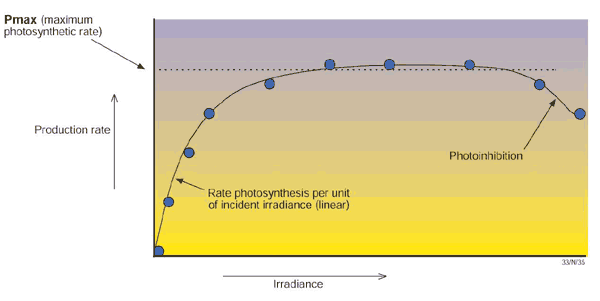Photosynthesis
Photosynthesis, primary production, carbon production or simply ‘production’ is the process whereby pigments such as chlorophyll a in plants and algae capture sunlight and covert it to organic matter and oxygen. Plankton generally has a Redfield molar proportion (e.g. C106H263O110N16P1). Therefore photosynthesis by phytoplankton can be represented by the following reaction [1]:
106CO2 + 16 NO3– + HPO42- + 122H2O + 18H+ + (solar energy, trace elements) = C106H263O110N16P1 + 138O2
A maximum photosynthetic rate (P-max) is attained when an increase in light level no longer causes an increase in production rate (Figure 1).

Figure 1. Pmax is the maximum photosynthetic rate. It is achieved at a certain light level for which any increase in light does not increase the production rate. However, a decrease may occur due to high light levels and is called photoinhibition (Contributed by Samantha Wellman, University of Newcastle).
- Drever, J.I. 1982. The Geochemistry of Natural Waters, Prentice-Hall, Inc., Englewoods Cliffs, N.J., pp. 388.


